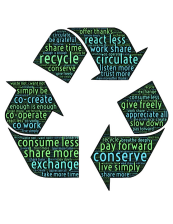Early detection of reading problems is important to prevent an enduring lag in reading skills. We studied the relationship between speed of word recognition (after six months of grade 1 education) and four kindergarten pre-literacy skills: letter knowledge, phonological awareness and naming speed for both digits and letters. Our sample consisted of 178 pupils divided over seven classes. In agreement with the literature, we found that all four kindergarten tests were related to speed of word recognition in grade 1. We also performed a multiple regression analysis with a set of background variables and the four kindergarten tests. The model explained 53% of the variance in speed of word recognition. However, only letter knowledge and naming speed for digits had a significant direct effect. Our conclusion is, nevertheless, that all four kindergarten tests should be used to identify children at risk for reading problems.
LINK
Digital surveillance technologies using artificial intelligence (AI) tools such as computer vision and facial recognition are becoming cheaper and easier to integrate into governance practices worldwide. Morocco serves as an example of how such technologies are becoming key tools of governance in authoritarian contexts. Based on qualitative fieldwork including semi-structured interviews, observation, and extensive desk reviews, this chapter focusses on the role played by AI-enhanced technology in urban surveillance and the control of migration between the Moroccan–Spanish borders. Two cross-cutting issues emerge: first, while international donors provide funding for urban and border surveillance projects, their role in enforcing transparency mechanisms in their implementation remains limited; second, Morocco’s existing legal framework hinders any kind of public oversight. Video surveillance is treated as the sole prerogative of the security apparatus, and so far public actors have avoided to engage directly with the topic. The lack of institutional oversight and public debate on the matter raise serious concerns on the extent to which the deployment of such technologies affects citizens’ rights. AI-enhanced surveillance is thus an intrinsically transnational challenge in which private interests of economic gain and public interests of national security collide with citizens’ human rights across the Global North/Global South divide.
MULTIFILE
Chemo-enzymatic peptide synthesis is unique in enabling the fast and sustainable synthesis of cyclic peptides, complex peptides and functionalized mini-proteins. The starting materials are routinely obtained by solid-phase peptide synthesis. One of the starting materials requires an oxo-ester functionality for recognition by the enzymes active site. The SPPS-based synthesis of the oxo-ester functionality still suffers from significant byproduct formation and low overall synthesis yields. The solution to this is introduction of the oxo-ester functionality at the end of the SPPS via a so-called Passerini reaction. Such a process does not only result in a more efficient production of cyclic or long peptides, but also expand the scope towards proteins derived from biological synthesis (i.e. recombinant proteins). To highlight the relevance of this proposed methodology, we will demonstrate a site-selective modification of the pharmaceutically important drug insulin.
Gezonde voedselkeuzes maken is niet altijd gemakkelijk. Om consumenten hierbij te helpen, is het wettelijk verplicht om voedingswaarden en ingrediëntenlijsten op verpakkingen van voedingsmiddelen en in de supermarktwebshop te vermelden. Steeds meer van dit soort informatie (food data) komt digitaal beschikbaar, ook voor consumenten. Met apps kunnen consumenten barcodes scannen en zien hoe gezond en ook duurzaam voedingsmiddelen zijn. Deze ontwikkeling biedt ook nieuwe kansen voor producenten om beter op de consumentenvraag in te spelen. Doordat steeds meer food data digitaal beschikbaar komen, kan ook steeds beter gemeten worden hoe gezond ons voedingsmiddelenaanbod is. Maar dan moet die informatie wel kloppen. Hier liggen nog uitdagingen: Food data zijn nog incompleet, onjuist, verouderd of nog helemaal niet digitaal beschikbaar. De oorzaken voor deze suboptimale informatie-uitwisseling liggen in een gebrek aan prioriteit voor food data bij producenten en te weinig samenwerking in de keten. Veel data worden nog handmatig in diverse databases overgetypt. Daarnaast heeft het lectoraat Voeding & Gezondheid van de HAS Hogeschool in de afgelopen jaren een aantal monitoringsstudies gedaan en food data verzameld voor en samen met verschillende partners. Ook hierbij werden food data van foto’s overgetypt. Er wordt dus nog veel handwerk gedaan. Dat moet efficiënter kunnen. Daarom wordt in dit project met praktijkpartners een OCR-tool door-ontwikkeld, getest en geborgd waarmee etiketinformatie van verpakkingen van voedingsmiddelen gedigitaliseerd kan worden. Food data worden verzameld, om de gezondheid van het voedingsmiddelaanbod te bestuderen en datavaardigheden te ontwikkelen bij docenten en bij studenten, die straks in deze foodsector gaan werken. Om uiteindelijk bij te dragen aan de prioriteit voor de juistheid van ‘Food data’ bij het voedingsmiddelenbedrijfsleven en zo consumenten te helpen bij het maken van geïnformeerde keuzes. OCR = Optical Character Recognition, hiermee kunnen beelden van getallen en woorden weer omgezet worden in digitale informatie.
Het Nationaal Groeifonds (NGF) programma is gericht op de transitie van de bouwindustrie naar een circulaire. De HU onderzoekt binnen dit programma hoe processen en informatie-uitwisseling ingericht kunnen worden om de bouwindustrie circulaire te krijgen. Daarnaast werken we aan het biobased en circulair maken van industriële renovatie van hoogbouw
